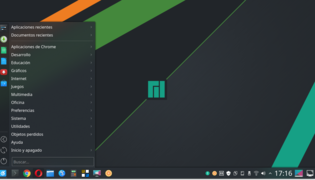Linux Basics/Distributions for beginners
Jump to navigation
Jump to search
Which distributions are recommended for beginners
[edit | edit source]Because Linux isn't developed by companies but volunteers who distribute the code under GPL v2,[1] so there are many distributions (Operating Systems) based upon Linux kernel (so not only Ubuntu exists :) ) This chapter aims to help the beginners which distribution to choose. I shorten distribution as distro this time.
- Ubuntu Linux
Ubuntu Linux is one of the most supported desktop Linux distributions. Its UI may be confusing for users coming from Windows, because by default the buttons in the titlebar are Mac-like. It comes with GNOME by default, but you can download it with XFCE, KDE Plasma, LXQt, MATE, Budge (and there is also Ubuntu Studio for professionals and Ubuntu Kylin for the Chinese). More info: Ubuntu flavours It comes with Debian's package manager (apt) but it's incompatible with Debian backwards. - Linux Mint
It's an Ubuntu fork, its aim is to grant an easy to use environment for those who come from Windows. The developers of Linux Mint develop the Cinnamon Desktop Environment and the programs associated with it. You can download Linux Mint with MATE and Xfce too. It relies only on Ubuntu LTS versions, so the software it uses remains on relatively stable versions. - Manjaro
It's based on Arch. If you want to get to know how does Linux work, and it's not a problem if the system breaks, and you need to fix it, then you should try it out hence you learn new things when you fix an update. Don't forget, you can ask help from the community anytime which is recommended, because you learn a lot from it. It uses pacman package manager, so problems can occur with the updates, so you may need manual intervention for installing the update, but you can learn by that too. The Arch User Repository (AUR) is a container where anyone can put packages, but you have to compile it from source. AUR packages have often problems but you can learn also by fixing them. It's a rolling release, which means it's enough to install it once and it updates to the latest version of every programs, so you don't have to reinstall at distro version update. The community is friendly and helpful. - MX Linux
MX Linux is on the first place of Distrowatch probably since 2018. The reason is that it's very easy to use, and there are so many programs in MX Tools which helps you a lot (like USB writer, desktop arrangement, MX Package installer which is very easy to use). It comes with Xfce only. It's compatible backwards with Debian, because it's a Debian stable fork. - Solus
It has a rolling release model (so it gets the updates continuously like Manjaro), but it's very stable. It has its own driver manager. Its drawback is the community, because it's not the friendliest, so you should ask for help in distro-independent communities if not Solus-specific is the problem.
Gallery
[edit | edit source]-
Ubuntu 21.10 Impish Indri
-
Cinnamon 4.4.8 on Linux Mint 19.3
-
Manjaro KDE 20.0
-
MX Linux 19.4
-
Solus 4.1 with Budgie desktop




